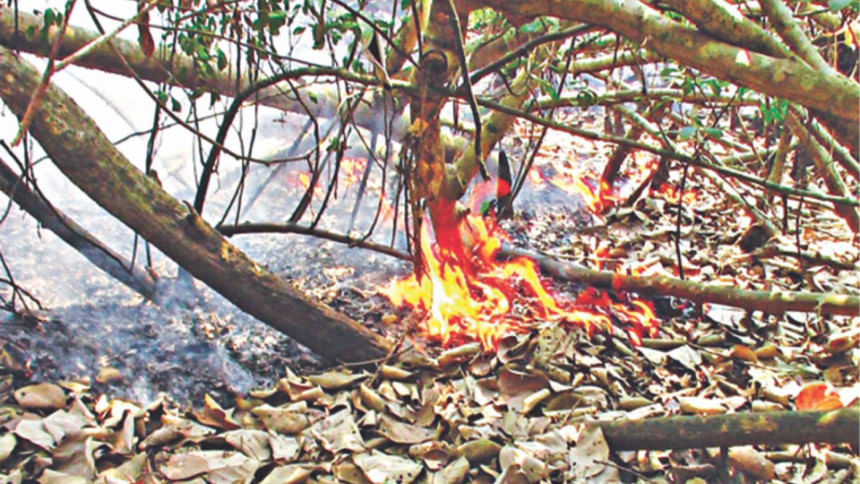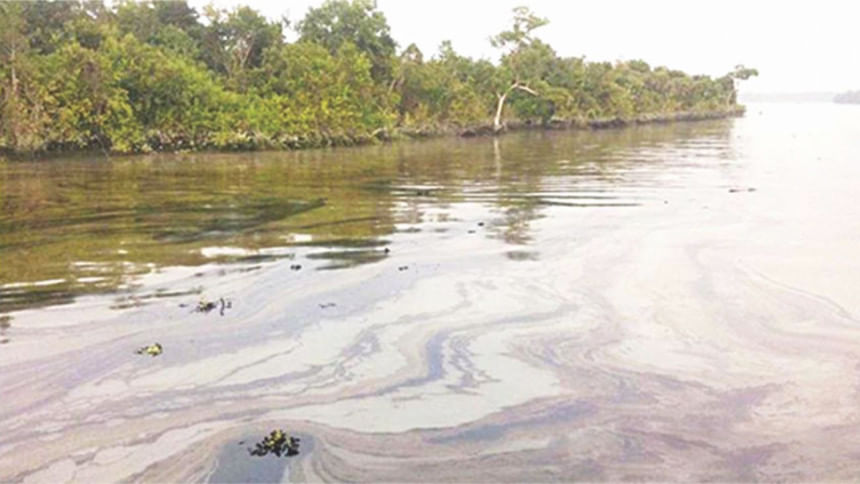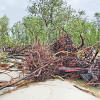Destroying Our Lifeline

One of Bangladesh's most significant natural resources is the Sundarbans-- the largest mangrove forest of the world comprising of 140,000 hectares of tidal forests. This forest provides 45 percent of Bangladesh's total timber resources and 41 percent of total forest revenue. Additionally, this green lifebelt has been protecting the 160 million people of Bangladesh from countless natural calamities.
When the destructive cyclone Sidr hit Bangladesh in 2007, this forest protected Bangladesh's heartland from the raging wind rushing at 260 miles per hour. As a consequence, the lush green forest was torn apart but it saved Bangladesh's densely populated cities from the tidal surge and raging storm.
Hundreds and thousands of affected people who lost all their belongings in the calamities had to take refuge in the forest. Therefore, besides protecting the country from the frequent natural disasters, the forest provides sustenance for the increasing number of destitute people. Even for their daily meal, these people have to move into the most isolated parts of the forest. Thus, the Sundarbans, the lush green sanctuary is gradually being taken over by human activities. Its bountiful resources and enormous habitat is shrinking fast due to relentless human encroachment.

The most atrocious form of encroachment we have witnessed very recently is the burning and destruction of acres of forest through deliberately set forest fires. Taking advantage of the dry season, miscreants set fire to the forest to clear the habitat and to turn it into their agricultural property. Within one month from March 27 to April 29, at least seven incidents of calculated forest fire destroyed acres of Sundarban's lush greenery. Although officials from the forest department said that the fire might be caused by someone's burnt cigarettes, local people revealed an entirely different story.
Mukhlessuddin, an NGO worker who has been working at Sharankhola, a place adjacent to the forest, for the rehabilitation of cyclone affected people said, “Some local elites deliberately destroyed the forest to expand their fishing canals. After clearing the forest, they will set nets and huge traps in the shallow rivers to catch fish and mud crabs for industrial purposes.”
“Setting fire to the forest has become frequent in every dry season. If the situation goes on like this, the Sundarbans will be wiped from our map out within a few years,” he adds. In fact, seven incidents of forest fires in the Sundarbans within one month are quite unprecedented where 22 incidents of forest fires occurred in the last 14 years. However, the rate of forest fires has increased recently. Just two years earlier, on May 21, 2014 a massive fire at Sundarbans' Dhansagar station destroyed five acres of forest. In March 2011, fire devastated Sundarbans three times in one month.
A responsible official of the forest department says anonymously, “We are dependent on the local fire service to defuse the forest fire. However, with their inadequate resources it is an impossible task for them to fight with such large scale fire.”
“As a result, our workers have to dig fire ditches to save the rest of the forest which is a very traditional way and most of the times were proven unsuccessful. We have been demanding repeatedly for a dedicated fire service unit for us. But we never got one,” adds the forest official.
In 2014, an oil tanker sank in one of the rivers of the Sundarbans and hundreds of tons of furnace oil polluted the river channels that flow through the forest. It took a serious toll on the forest's flora and fauna. The government put a ban on using the river channels of the forest by the commercial vessels. But nobody paid any heed to that order. Cargo vessels are still navigating along the rivers in the forest frequently. As a consequence, two cargo vessels laden with coal and chemical fertiliser sank in the river again in 2015. Paying no heed to these disasters, the Bangladesh government is also still continuing its power plant project, placed dangerously adjacent to the forest.
It is evident that the Sundarbans, Bangladesh's lifeline, has become a victim of utter negligence and irrational whims of our leaders. We, Bangladeshis are very interested to tap into all of our resources, but we are not at all concerned about saving this world heritage site which is vital for the very existence of this nation. The seasons of tropical cyclones is approaching fast. Will Bangladeshis be able to find an alternative to Sundarbans to save them from the incoming devastating calamities? The question remains.

 For all latest news, follow The Daily Star's Google News channel.
For all latest news, follow The Daily Star's Google News channel. 








Comments